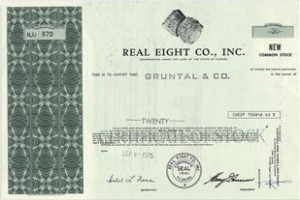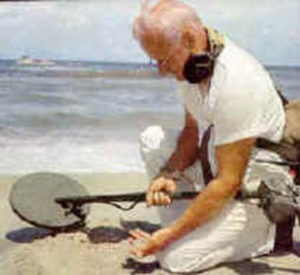Today we received this very interesting article regarding Florida’s Treasure Coast and the McLarty Treasure Museum. Published by VIVA FLORIDA 500, the article is a short summary of the efforts made by historians, archaeologists and others to recover and catalog the extensive treasure of the Spanish Plate Fleet destroyed by a hurricane on July 31st, 1715. Much research has been devoted to uncover the mysteries left behind by this most unfortunate maritime disaster. Much of the history and treasure related to this event is on display at the McLarty Treasure Museum.
VIVA FLORIDA 500 is a statewide initiative led by the Florida Department of State. This organization highlights 500 years of history beginning with the arrival of Juan Ponce de León to the land he name La Florida in 1513.
This article courtesy of Martha Robinson, Communications Manager, Florida Park Service.
TREASURE ON THE TREASURE COAST
For years and years, cannons, naval relics and other artifacts of the Spanish Colonial period had been discovered and retrieved along the beaches in Indian River County, just south of Sebastian Inlet. Nearby it was reported that a Spanish galleon was buried in the sands of the beach. Many believed that these remains were from Spanish treasure ships, others thought they were remains of Spanish exploration.
 |
| Stock Certificate from the Real Eight CompanyAlso referred to occasionally as “The Real 8 Company”- was incorporated in 1961. It had eight members….Kip Wagner, Kip Kelso, Dan Thompson, Harry Cannon, Lou Ullian, Del Long, Erv Taylor and Lis... More, From StockLobster, Antique Stock and Bond Certificates |
In late 1941 or early 1942, Charles D. Higgs, a local historian, decided to investigate these reports and proceeded to examine the area south of this shipwreck. In 1942, he wrote in the Florida Historical Quarterly “quantities of bones-animal and some human, were observed … A little poking around revealed iron spikes, clay-pipes, and a peculiar assortment of pottery sherds.” He went on to report: “the prevalence here of several varieties of Chinese porcelain fragments from the same period has proven most enigmatical.” Higgs concluded that this area was likely the remains of an early Spanish settlement, possibly an outpost of the St. Augustine garrison or of Ponce de Leon’s second Florida landing.
In 1946, Hale G. Smith, assistant state archaeologist for the Florida Park Service, suggested that the site was actually the remains of the Spanish Plate Fleet Wreck of 1715. The fleet was devastated by a hurricane on July 31, 1715, which destroyed all but one ship, killed hundreds and scattered Spanish treasure along the Indian River coast.
Which was it?
 |
| Kip WagnerKip Wagner (1906 – 1972) was instrumental in the formation of the team that later became the Real Eight Company and one of the greatest salvage groups that ever explored the 1715 Fleet wrecks. He ... More uses a $15 metal detector searching for treasure; From 1715Fleet.com. |
It wasn’t until the 1960s that the mystery was solved. Kip WagnerKip Wagner (1906 – 1972) was instrumental in the formation of the team that later became the Real Eight Company and one of the greatest salvage groups that ever explored the 1715 Fleet wrecks. He ... More became interested in the stories of silver coins washing out of the beaches south of Sebastian Inlet. After World War II, he began searching for some of these coins and eventually found a few. He continued to search for more remains and soon began to find silver coins. In 1959, Kip organized the Real Eight CompanyAlso referred to occasionally as “The Real 8 Company”- was incorporated in 1961. It had eight members….Kip Wagner, Kip Kelso, Dan Thompson, Harry Cannon, Lou Ullian, Del Long, Erv Taylor and Lis... More to formally begin the search for the wrecks and the camp of the survivors of the 1715 Wreck, which by this time he was convinced they had located. Wagner obtained a nonexclusive salvage lease from the State of Florida to explore and salvage wrecks along a 50 mile stretch of coast south of Sebastian Inlet. The lease provided that Wagner would give the state 25 percent of what he found. By 1964 his company had teamed up with Mel Fisher’s Treasure Salvors, Inc. to continue his explorations. By the end of that year, the partners had reportedly recovered more $3 million of gold, silver, jewelry and artifacts. Salvage companies under contract with the State of Florida continue to find artifacts and other material from the fleet to this day.
In March 1966, Robert McLarty offered to donate to the Board of Parks and Historic Memorials 300 feet of ocean front property for a museum and archaeological research. It was believed that this was part of the site of the 1715 Spanish Plate Fleet Survivors Camp which was later confirmed by archaeologist Carl Clausen, acting on behalf of the state. That offer was accepted and the state constructed the McLarty Treasure Museum which is today a part of Sebastian Inlet State Park and houses some of artifacts recovered by Wagner’s efforts and tells the story of the 1715 Spanish Plate Fleet’s tragic demise.

